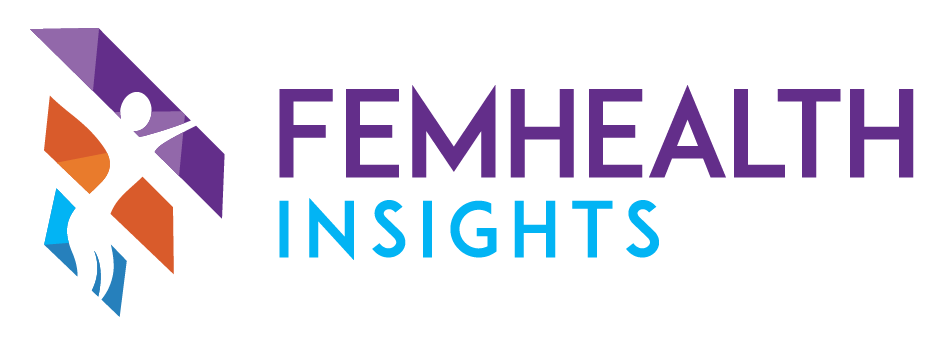Reproductive Health Innovation Summit: Breaking Barriers in Women’s Health
Written by Abigail Hyson, FemHealth Fellow, FemHealth Insights
Being in attendance at the Reproductive Health Innovation Summit in Boston was an invigorating experience. With different professional backgrounds in the audience (such as CEO’s, founders, advocates, and future-forward thinkers of the healthcare industry) the main core reason was fundamental; propelling forward advancements and innovations in women’s health. Over the course of the two-day summit, there were many panels and round-table discussions, however, there were some notable trends that came through with each conversation.
Menstrual Disorders
With PCOS to Endometriosis, there was a clear lack of understanding the multifaceted nature of these conditions and how they affect the body long-term. At the point of diagnosis discussion is often focused solely on short-term improvement of symptoms, however, many of these same patients will come back in 5-10 years with additional symptoms exacerbated by the ongoing complexity of these conditions. There is a need for increased awareness among physicians regarding the overall impact of chronic menstrual disorders on the body as a whole and connecting the bridge to foster a comprehensive care plan. More research will hopefully in turn provide more knowledge to physicians in helping them facilitate deeper conversations with their patients.
Panel: Targeting the Cause and not the Symptoms: Developing Novel Treatments for PCOS.
Postpartum Benefits and Experiences
People seeking continuity of care and services that fall within the postpartum experience are running into barriers. From juggling finding a pediatrician for their baby’s well-child visit, to navigating how to breastfeed, dealing with potential mental health concerns, and having preventative care fall to the wayside to care for a new child, the ecosystem that postpartum mothers deal with is diverse. Return to work plans get lost in the weeds of motherhood, which is why there has been an increasing number of employees that are focusing on what benefits their company offers and how that will impact them in the long run if they plan on having children. What used to be considered a “robust” level of benefits included just medical, vision, and dental, and perhaps life insurance and a 401k. Within the past few years there has been an evolution in employees seeking out benefits to aid them in experiences like IVF and postpartum care. From a talent acquisition and retention lens, companies are wanting to gain a better experience for their employees as a whole to improve outcomes, decrease risk, and manage claims to build a healthier workforce.
Panel: The Future of Employer Sponsored Reproductive Health Options
Differentiating Patient Journeys
Through any diagnoses a patient is going through, physicians are urged to tailor discussions to individual patients, recognizing diverse learning styles and preferences that each patient presents. Beyond merely selling products, there is a need for a holistic approach in blending technology and services as this will help meet varied patient needs effectively. Financial implications are also one of the biggest contributors to differentiating customer journeys as they limit access to comprehensive tools, education, and further enlarge the health equity gap.
In addition to financial constraints, there are also information constraints as well. On social media, wide-spread information being used as a blanket-approach to every single patient facing the same diagnosis is harmful. As each patient requires different information for their own health journey, the importance should shift to not only accurate, but individualized information to enhance positive outcomes for each patient journey.
Legislation and Advocacy
There is a push-pull effect that is hard to keep effectively going between legislation and women’s health. There are multiple challenges, particularly in the abortion care sector, marked by regulatory hurdles and accessibility issues. Progress in women’s health innovation has been steadily improving, but unfortunately, legislation has been stuck behind. COVID has impacted the way we think and innovate new ways of care and it’s important that we nurture the relationship between how we advocate and how we innovate. The rise of telehealth also plays a part in legislation. Even though abortion care is highly scrutinized in lawmaking, there is a need to include more concise language to protect patients when getting telehealth abortion care. Ultimately, this leads to a constant adaptation for telehealth companies.
Innovation
Not only did the Reproductive Health Innovation Summit provide great panelists and moderators, we also witnessed innovation through multi-day showcase pitches, which spotlighted pioneering companies like Daye and Vitala Global. Daye is setting a new standard in period care and gynae health; offering period products, vaginal microbiome screenings, and a period pain clinic. Vitala Global provides women, girls, and their communities evidence-based digital platforms to support their safe abortion and family planning journeys.
Valentina Milanova, Founder & CEO of Daye
Conclusion
Pivotal household roles are mostly assumed by women themselves, not just as healthcare decision-makers but also as consumer and financial decision-makers. During her panel, Charlotte Owens (Head of Medical Affairs & Outcomes Research at Organon) mentioned “When a woman is healthy, a nation is healthy”. Advancing reproductive health necessitates a multi-pronged approach that can only be achieved through a collective and collaborative effort. With more of these conversations, including the ones we are having at FemHealth Insights, I’m hopeful that we can further make change on women’s health.
About the Author:
Abigail Hyson is a writer, advocate, and Women’s Health enthusiast. She has worked at multiple women’s health startups, helping one to a successful exit. With six years in the healthcare industry she is also an experienced strategist, focusing mainly on customer insights, patient journey, and creating a cohesive community voice.


